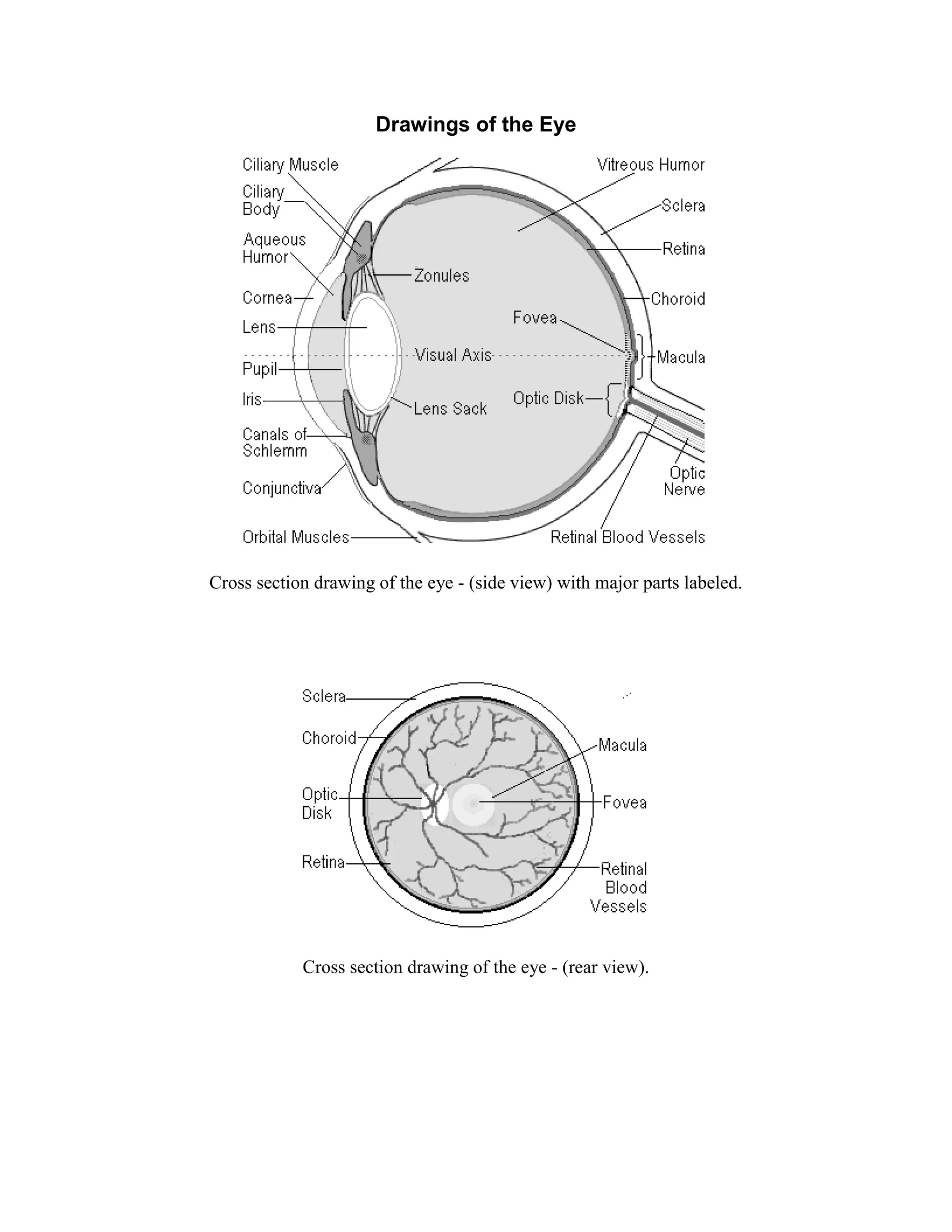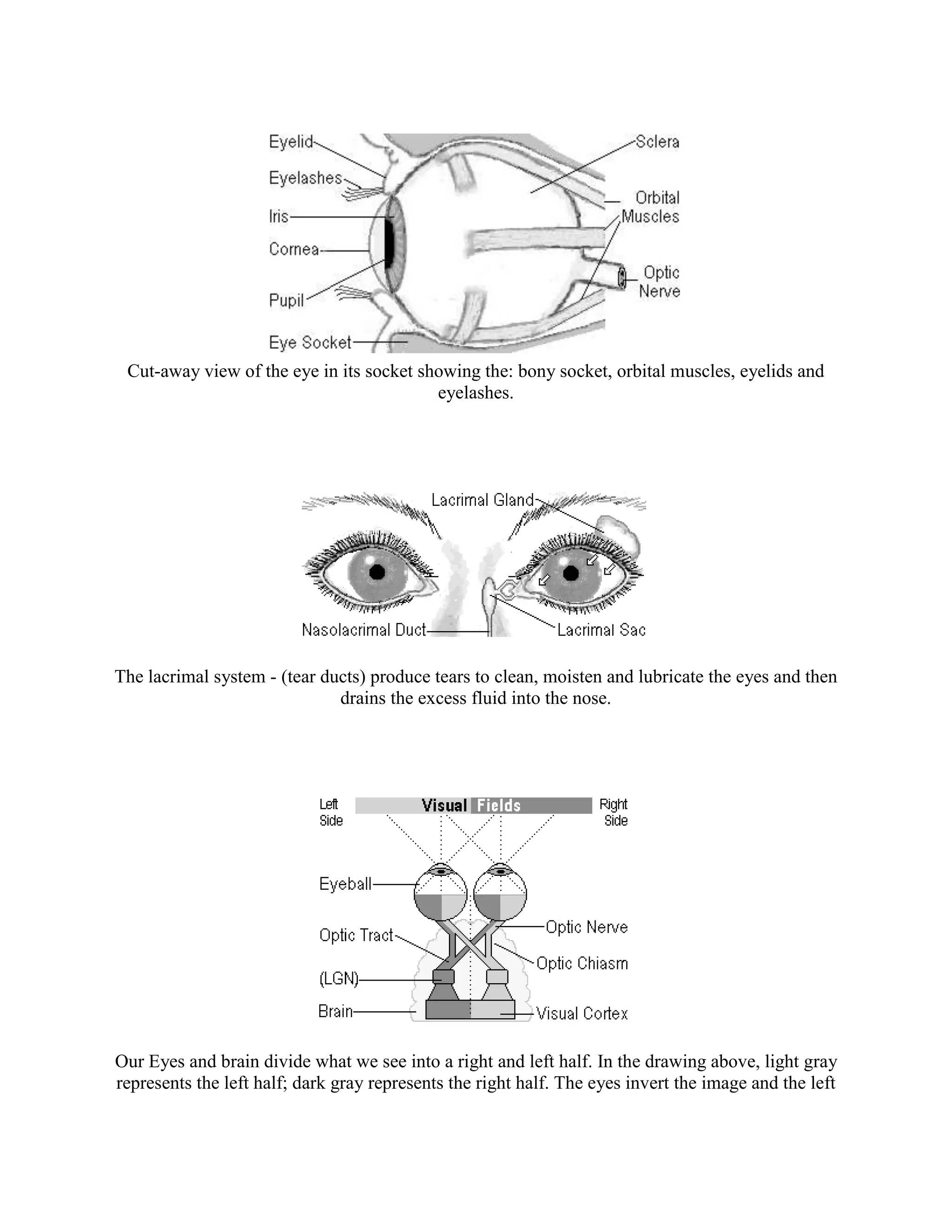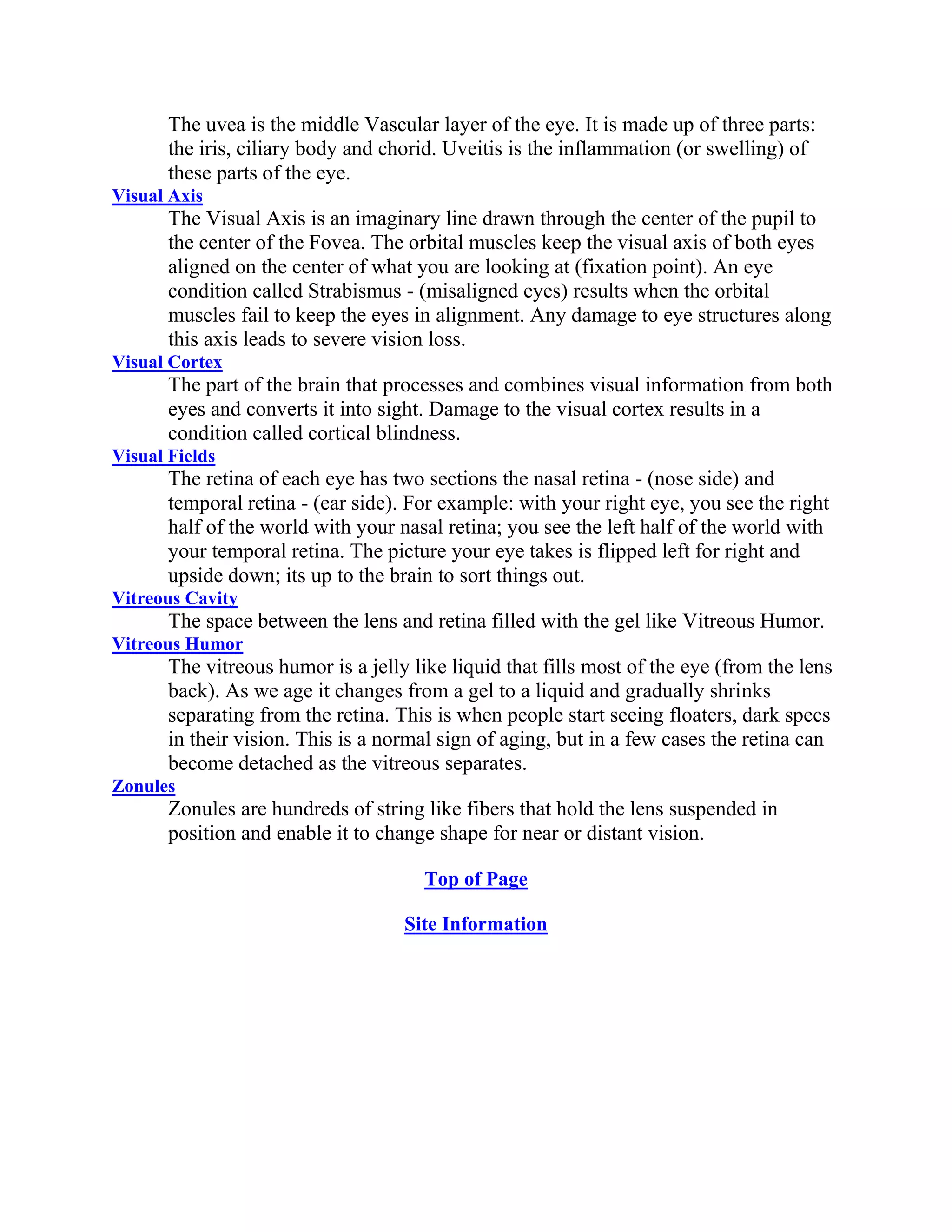The document provides detailed information about the anatomy and physiology of the human eye. It includes labeled diagrams and descriptions of the major parts of the eye such as the cornea, iris, lens, retina, optic nerve and their functions. It also explains common eye conditions that can occur when certain parts are damaged or not functioning properly, such as cataracts, glaucoma and macular degeneration.






